
A lot of people have gotten the message that ducts for your HVAC system—and the system itself—should be in conditioned space. Researchers at the National Renewable Energy Lab (NREL) studied the effect of ducts in an unconditioned attic and found they add 25% to the cooling load in hot climates. In their study, the NREL team assumed the ducts were sealed well. New homes that have to pass duct tests are often sealed well, but the reality for many duct systems is that they’re leaky. In addition to the losses associated with the leakage, unbalanced duct leakage creates other problems. So, get those ducts out of an unconditioned attic, if at all possible.
But what can you do if you have to put—or leave—ducts in an unconditioned attic? Maybe you’re buying a tract home, and they won’t encapsulate the attic or move the ducts. Maybe you’re replacing a system that’s in an unconditioned attic now and can’t afford to encapsulate the attic, too. Maybe you’re worried about moving the building enclosure to the roof line.
Here are some ways you can make the most of a not-so-ideal situation:
1. Never, ever put ducts against the roof deck
The absolute hottest part of an attic on a summer day is the underside of the roof deck. It can get so hot that you can’t even keep your hand against it. Why some contractors think it’s OK to strap a duct right up against the deck is beyond me. In addition to the heat, the roofing nails coming through the decking can puncture the duct insulation jacket or the duct itself.
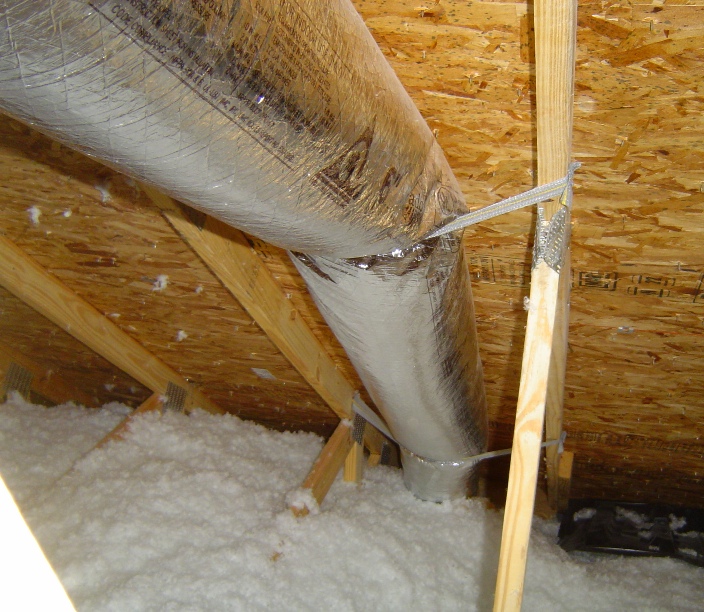
2. Keep the ducts low in the attic
Attics get very hot. On a sunny summer day, the air temperature in an unconditioned attic can get up to 120° F or even a bit higher. But what you may not know is that attics aren’t uniformly hot. The hottest air in an attic is up high. The coolest is down near the attic floor.
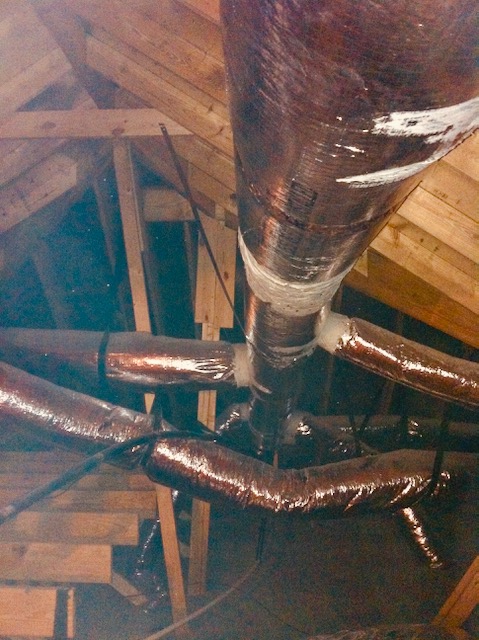
3. Use a horizontal air handler
For the same reason you want the ducts to be low in an unconditioned attic, the air handler should also be low in the attic. The furnace and air conditioner shown below are vertical, with the supply ducts at the top. In summer, you’re putting cold air into those supply ducts that are higher in the attic because of the choice of vertical air handler.
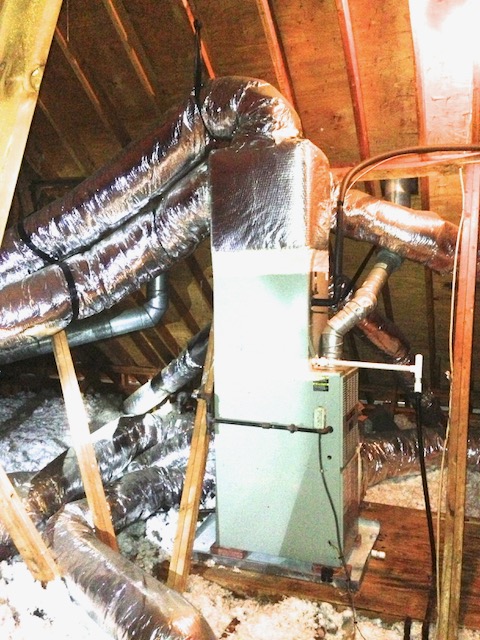
4. Seal the heck out of the ducts
Duct leakage is really bad when ducts are in an unconditioned attic. Unbalanced duct leakage is even worse. Seal them with abundant quantities of mastic.
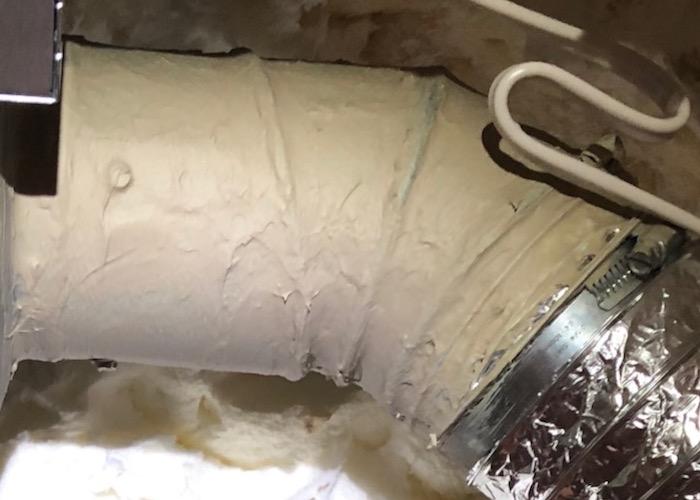
5. Insulate the heck out of the ducts and air handler
Attics get really hot. Insulation helps reduce heat flow. Use a lot of it. Unfortunately, standard duct insulation is available only up to R-8. In a dry climate, you can bury the ducts in blown attic insulation. In a humid climate, you might be lucky and get away with that if you put only R-8 on the ducts. But buried ducts in a humid climate are at risk for condensation. The building code now allows it, but only with R-13 on the ducts before you bury them in IECC climate zones 1A, 2A, and 3A.
![Air handler and plenums well insulated in an unconditioned attic [Photo by Mike MacFarland, used with permission]](https://www.energyvanguard.com/wp-content/uploads/2021/06/air-handler-plenums-well-insulated-unconditioned-attic.jpeg)
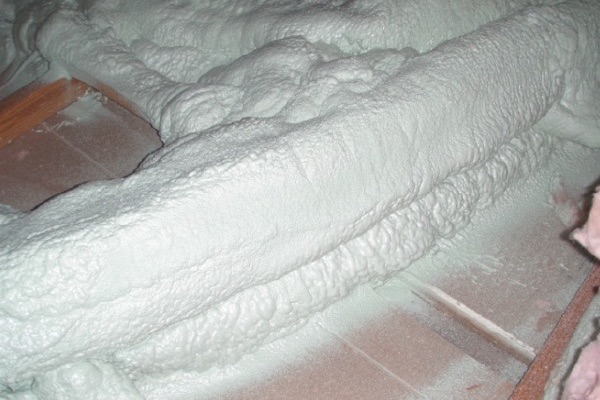
6. Keep your attic cooler with a reflective roof or radiant barrier
Another way to reduce heat flow into your ducts from a hot, unconditioned attic is to keep the attic cooler. The best way to cool your attic is by stopping the heat before it has a chance to enter by using a reflective roof. A second choice would be to install a radiant barrier beneath the roof deck. (Radiant barriers aren’t a no-brainer, though, because they’re cost-effectiveness is marginal.) A really bad choice would be to use powered attic ventilators.
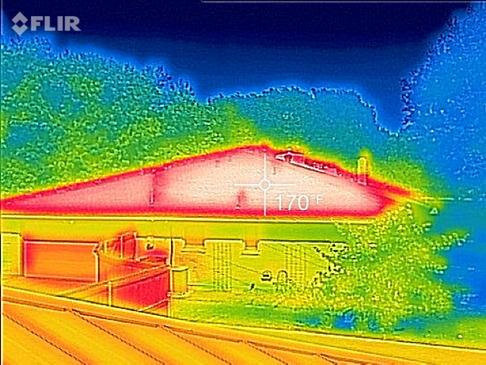
_________________________________________________________________________
Allison Bailes of Atlanta, Georgia, is a speaker, writer, building science consultant, and founder of Energy Vanguard. He is also the author of the Energy Vanguard Blog and is writing a book. You can follow him on Twitter at @EnergyVanguard.
Weekly Newsletter
Get building science and energy efficiency advice, plus special offers, in your inbox.






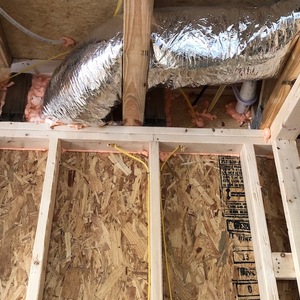
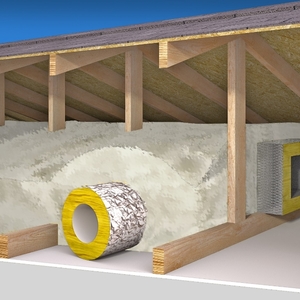
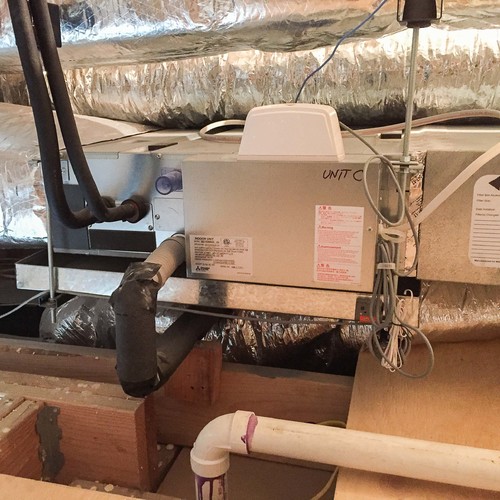






12 Comments
An inexpensive approach is to place 1 inch of reflective rigid foam against the rafters forming an air channel to the roof ridge vent. Then tape the seams with permeable tape. That lowered attic temps from 120f to about 95f in summer. In winter, it went from -15f to about 25f.
Did you place reflective side facing down or up?
The concern in other articles on this site with placing the reflective side up is that over time it collects dust and is thus no longer reflective. At least placed facing down, it reflects the conditioned air from the living space that has escaped to the attic back downwards towards the living space.
CL, either direction works as long as there's an air gap. For the dust reason you stated, I would face the reflective side down.
I placed reflective down, engineering best practice. Away from the heat source. That allows you to clean the radiating surface if it gets dusty. Always design things to maintain them … every thing breaks.
I almost went that route however my attic suffers from Option 1 so when finishing it I was forced to seal the duct behind the drywall.
When you have a conditioned attic, but the temps are still 95 degrees on 95 degree days, is insulating the ducts for a ducted minisplit still the right thing to do?
1910duplex, insulating the ducts in an encapsulated attic is the right thing to do no matter the temperature in the attic or the type of system.
Option No 7 : Pray that lightning hits the house and burns to the ground when you're away for the weekend then build it right. ;)
This is mainly true for hot climates right? What about temperate climates? I am in Roanoke Va and I still am in a primarily heating area even thought its been over 90 here much of the summer. Do ducts being in an attic no benefit enough from solar heating in the winter? I assume not as the nights can be below 20 here easily for a week or more, especially in January.
On one of my first rehabs (cape at the beach) back in the early 90's the HVAC guy put one of the units up in the unconditioned knee wall and small end attic. What did I know ? Later when I understood how stupid it was I attached foam boards horizontal across the roof rafters -- my memory was 1.5". We angled the edges top and bottom and used metal tape on the seams. It already had blown insulation on the ceiling ..... we added more so it really covered the intersection of the foam. Was surprised how well it worked. About 6 years ago when the unit died -- took it out and did two cassette mini-splits. We replaced the tape and did some can foam to seal it up again and made additional 2" foam boxes for the mini-splits.
Never made the mistake again -- always keep in a conditioned space. or make the space conditioned
"A second choice would be to install a radiant barrier beneath the roof deck. (Radiant barriers aren’t a no-brainer, though, because they’re cost-effectiveness is marginal.)"
I installed barrier foil in my attic: 1) on the rafters to block the sun in the summer; 2) on the floor to keep the heat in the house during the winter (insulation ratings, like r-19, assume a closed system; using a permeable foil barrier on the attic floor effectively closes the attic insulation system). The barrier foil installed on the floor would be sufficient on its own for both summer and winter, but it would collect dust and lose some effectiveness; the rafter foil keeps much of the dust out of the attic and it can't then enter your house. We have an AC system/ductwork in our attic, I think it saves us about 25% on our energy bills. The foil itself is relatively cheap; the labor is probably expensive, but do it yourselfers can easily install the foil.
What about when you have insulated flex ducts, like the ones in the pictures above in the article, are partially encapsulated with blown in cellulose in the attic? They are not totally encapsulated by the cellulose insulation.
I don’t have cooling on my heating system, only heating. It’s a vented flat pitched roof in Northern NJ.
Log in or create an account to post a comment.
Sign up Log in